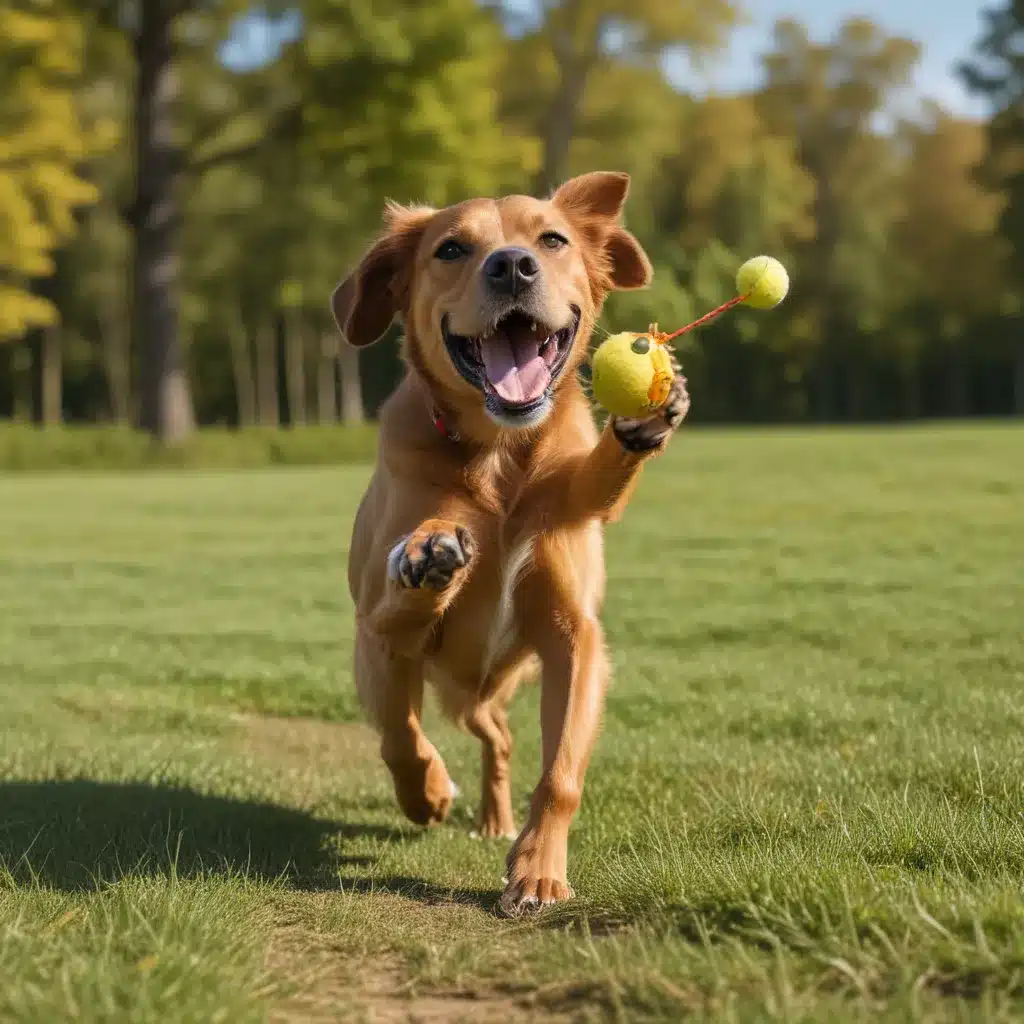
The Elusive Art of Fetch
Have you ever watched your dog excitedly chase after a ball, only to have them stare at it blankly once they reach it, as if the concept of bringing it back to you is completely foreign? Or maybe your pup starts out strong, proudly retrieving the toy, but then suddenly decides they’d much rather keep it for themselves, leaving you chasing them around the yard? If this sounds familiar, fear not – you’re not alone in your quest to teach your canine companion the joys of fetching.
As a lifelong dog owner, I’ve experienced the highs and lows of the fetch training process. From my earliest days with my first pup, Buddy, who took to the game like a natural, to my current dog, Luna, who needed a bit more coaxing to understand the whole “bring it back” part, I’ve learned that teaching fetch requires patience, persistence, and a willingness to get creative.
Laying the Groundwork
The first step in teaching your dog to fetch is to establish a solid “hold” command. This lays the foundation for the retrieval process, as your pup needs to be comfortable grabbing and holding onto the toy before they can start bringing it back to you.
To teach “hold,” start by offering your dog a toy or treat and saying the word “hold” as they take it in their mouth. Reward them with praise and a tasty treat when they comply. Gradually increase the time they need to hold the object before receiving the reward. This will help them understand that holding onto something is the desired behavior.
Once your dog has mastered the “hold” command, it’s time to move on to the next step: the actual fetch.
The Fetch Frenzy
The key to successful fetch training is to make it a positive, rewarding experience for your dog. Start by choosing a high-value toy that your pup is already excited about, like a tennis ball or a plush squeaky toy. According to the American Kennel Club, some dogs respond better to toys with built-in food compartments, as the promise of a tasty treat can be a strong motivator.
Begin by standing a short distance away from your dog and tossing the toy a few feet in front of them, using an enthusiastic “Fetch!” command. When they go to retrieve the toy, praise them lavishly and reward with a treat. Gradually increase the distance you throw the toy, always making sure to celebrate their success.
If your dog seems hesitant to go after the toy, try getting them excited by waving it around and making playful noises before the toss. You can also try rolling the toy on the ground, as the movement may pique their interest. And remember, patience is key – some dogs simply take longer than others to warm up to the idea of fetch.
The Tricky Retrieve
Once your dog has mastered the art of chasing down the toy, the next challenge is getting them to bring it back to you. This is where the real test of your training skills comes into play.
As demonstrated in this helpful video, one effective technique is to have a second, even tastier treat ready to reward your dog the moment they return the toy to you. This positive reinforcement helps cement the idea that bringing the toy back is the desired behavior.
If your pup is still reluctant to relinquish the toy, try trading them for an even better reward, like a piece of chicken or a small handful of their favorite kibble. The key is to make the exchange feel like a fair deal, rather than a punishment.
Overcoming Obstacles
Of course, every dog is different, and you may encounter some unique challenges along the way. As one Reddit user shared, some dogs may simply not be interested in the game of fetch, while others may have difficulty understanding the concept of retrieving and returning the toy.
If you find your pup struggling, don’t get discouraged. Instead, try mixing up the toys you use or incorporating different environments, like playing fetch in the park or at the beach. As this YouTube video demonstrates, some dogs respond better to plush, squeaky toys, while others prefer the thrill of chasing after a ball.
And remember, the most important thing is to keep the training sessions positive and upbeat. Fetch should be a fun activity for both you and your dog, so try not to get too frustrated if progress seems slow. With patience and consistency, you’ll be tossing the ball and celebrating successful returns in no time.
Fetch for the Win
As any proud dog parent can attest, there’s nothing quite like the joy of watching your canine companion eagerly chase after a toy, only to proudly bring it back to you, tail wagging furiously. It’s a simple game, yet one that can forge an even stronger bond between you and your furry friend.
So, if you’re ready to dive into the world of fetch, head on over to ihavedogs.com to stock up on the perfect toys and treats to make your training sessions a success. With a little creativity and a whole lot of patience, you and your pup will be masters of the fetch before you know it.

